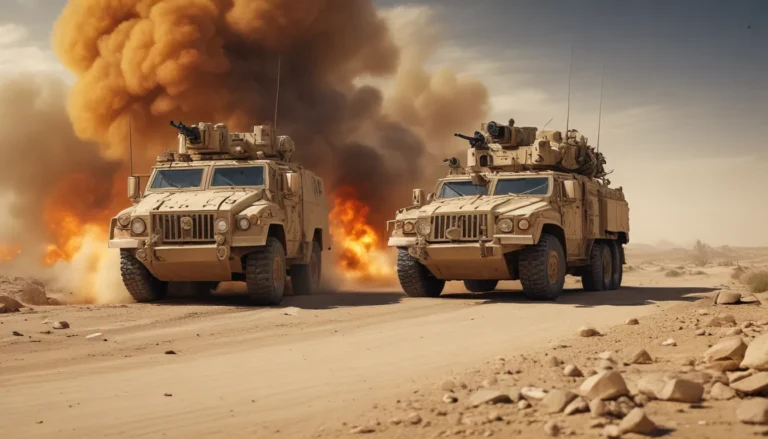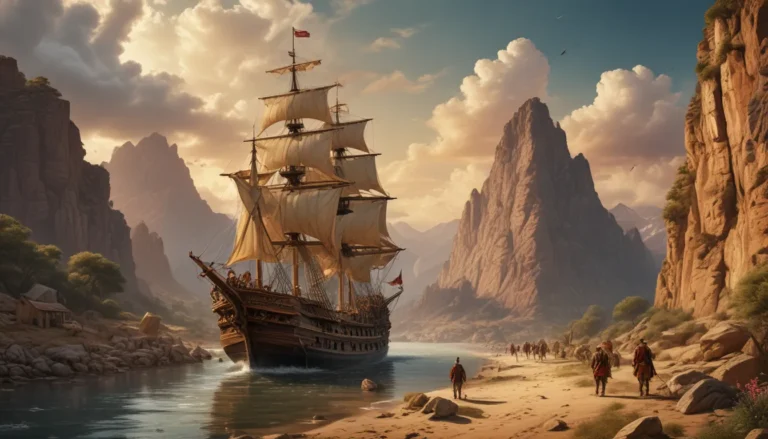The images in our articles may not match the content exactly. They are used to grab your attention, not to show the exact details in the text. The images complement the text but do not replace it.
Are you intrigued by the clash that reshaped the late 19th-century geopolitical landscape? The Spanish-American War stands as a pivotal moment in history, unraveling tales of bravery, strategy, and unexpected outcomes. Lasting a mere ten weeks, this conflict dramatically changed the fate of nations and empires, ending Spain’s colonial rule in the Americas and setting the stage for the emergence of the United States as a global power. Let’s peel back the layers of history and uncover 23 astonishing facts about this captivating conflict. Get ready to have your mind blown by the fascinating stories that shaped the Spanish-American War.
What Sparked the Spanish-American War?
The Spanish-American War of 1898 was ignited by the explosion of the USS Maine in Havana Harbor, serving as the tipping point in the conflict between Spain and America. This event unleashed a surge in public support for Cuban independence, fueled by sensationalist journalism that pinned the blame for the explosion on Spanish sabotage. The USS Maine, a United States Navy ship, became a symbol of the escalating tensions that led to the outbreak of war.
Key Battles of the Spanish-American War
Several pivotal battles defined the course of the Spanish-American War, showcasing the emergence of American military power on the world stage. The Battle of Manila Bay saw a resounding victory for the United States, with the destruction of the Spanish Pacific fleet under the leadership of Commodore George Dewey. Additionally, the Battle of San Juan Hill witnessed Theodore Roosevelt and his Rough Riders, along with African American soldiers, capturing this strategic location, highlighting the diverse composition of American forces in the conflict.
The Treaty of Paris 1898
The conclusion of the Spanish-American War came with the signing of the Treaty of Paris in 1898, marking a significant turning point for both Spain and the United States. Spain relinquished control over territories like Cuba, Puerto Rico, the Philippines, and Guam, signaling the end of its colonial empire. The purchase of the Philippines by the United States for $20 million set the stage for the subsequent Philippine-American War and the beginning of American colonial rule in the region.
Impact on Cuba and Puerto Rico
The aftermath of the Spanish-American War left lasting effects on territories like Cuba and Puerto Rico, shaping their destinies in the wake of the conflict. While Cuba gained nominal independence, it came under significant American influence, with the Platt Amendment granting the U.S. the right to intervene in Cuban affairs. On the other hand, Puerto Rico became a U.S. territory, eventually leading to its residents attaining U.S. citizenship in 1917, solidifying its ties to the United States.
The Rise of the United States as a World Power
The Spanish-American War marked a pivotal moment in U.S. foreign policy and military strategy, signaling the country’s ascent as a global power on the international stage. The victory showcased the effectiveness of the U.S. Navy and its ability to project military power overseas, propelling America into the realm of imperial competition with European powers and solidifying its status as a major player in world affairs.
Media’s Role in the War
The role of the media, particularly through sensationalist journalism, played a crucial role in drumming up public support for the Spanish-American War. Newspapers owned by figures like William Randolph Hearst and Joseph Pulitzer engaged in “yellow journalism,” exaggerating stories of Spanish atrocities in Cuba to sway public sentiment towards intervention. This media frenzy helped push the U.S. closer to war and highlighted the influence of the press in shaping public opinion during times of conflict.
Technological Advancements and the War
The Spanish-American War marked the utilization of new technologies that would shape future conflicts and warfare strategies. It was one of the first conflicts to be documented through motion picture cameras, providing a new visual medium for showcasing the realities of war to the public. Additionally, the use of smokeless gunpowder by U.S. forces offered a significant advantage, reducing the visibility of their positions and conferring a tactical edge over Spanish forces in battle.
African American Soldiers in the War
African American soldiers made significant contributions to the Spanish-American War, participating in key battles and facing racism both on and off the battlefield. Members of the all-black 9th and 10th Cavalry Regiments, known as the Buffalo Soldiers, played a vital role in the success of the Rough Riders at San Juan Hill, demonstrating their valor and combat prowess. Despite their service, these soldiers returned home to a nation still grappling with racial segregation and discrimination.
Legacy of the Spanish-American War
The Spanish-American War left a profound impact on American society, politics, and the military, shaping the course of U.S. history in the years to come. The conflict spurred the development of a modern and powerful U.S. Navy, a critical factor in America’s rise as a global power and a key player on the world stage. Moreover, the war also marked the first use of concentration camps by the United States, a dark aspect of its legacy that echoed throughout subsequent conflicts and engagements. Veterans of the war played a crucial role in establishing organizations like the American Legion, shaping the future of U.S. military and veterans’ affairs.
The War’s Influence on American Culture
The Spanish-American War left an indelible mark on American culture, inspiring a wave of patriotism and military-themed art and literature. The conflict instilled a sense of national pride and heroism, with figures like Theodore Roosevelt emerging as symbols of American valor and leadership. His image as a war hero catapulted him onto the national stage, setting the stage for his future presidency and leaving an enduring impression on American culture and history.
The Philippines After the War
The aftermath of the Spanish-American War had far-reaching consequences for the Philippines, ushering in a new era of conflict and colonial rule under American administration. The Philippine-American War followed, a brutal and protracted struggle that resulted in significant casualties on both sides. This conflict set the stage for American colonial rule in the Philippines, which endured until 1946, shaping the destiny of the nation and its people for decades to come. Filipino resistance fighters, known as Katipuneros, became national heroes for their valiant struggle against American occupation, embodying the spirit of resistance and independence in the face of adversity.
A Final Look at the Spanish-American War
As we conclude our exploration of the Spanish-American War, we’ve uncovered 23 remarkable facts that shed new light on this transformative moment in history. From the explosion of the USS Maine to the signing of the Treaty of Paris, each fact has contributed to a richer understanding of the conflict that reshaped nations and forged new destinies. The Spanish-American War wasn’t just a series of battles; it was a catalyst for change, sparking movements for independence and altering the trajectory of international relations. By delving into these insights, we gain a deeper appreciation for the complexity of history and the enduring lessons it imparts. History is more than a chronicle of past events; it’s a reflection of the forces that sculpt our world and shape our collective future. Armed with these facts, the next time you encounter a tale of the Spanish-American War, you’ll have a treasure trove of knowledge to share and inspire others to explore the depths of history.
Frequently Asked Questions About the Spanish-American War
Q: What sparked the Spanish-American War in 1898?
A: The conflict was ignited by the explosion of the USS Maine in Havana Harbor, with many attributing the event to Spanish sabotage, leading to a surge in public support for intervention.
Q: How long did the Spanish-American War last?
A: Despite its significance, the war spanned just under four months, running from April to August 1898, culminating in the signing of the Treaty of Paris.
Q: Were there any significant battles during the Spanish-American War?
A: Several key battles defined the conflict, including the Battle of Manila Bay and the Battle of San Juan Hill, showcasing the prowess of the emerging American military.
Q: What were the main outcomes of the Spanish-American War?
A: The war marked the end of Spain’s colonial empire, with Spain ceding territories like Puerto Rico, Guam, and the Philippines to the United States, solidifying America’s status as a global power.
Q: How did the Spanish-American War affect the people in the colonies?
A: The war brought both liberation from Spanish rule and the onset of American imperialism to newly acquired territories, shaping their futures and trajectories in the years to come.
Q: What role did journalism play in the lead-up to the Spanish-American War?
A: Sensationalist journalism, known as “yellow journalism,” sensationalized stories of Spanish atrocities in Cuba, inflaming public sentiment and influencing America’s decision to enter the conflict.
Q: Did any future U.S. presidents serve in the Spanish-American War?
A: Yes, Theodore Roosevelt, a key figure in the war as a leader of the Rough Riders, went on to become the 26th president of the United States, exemplifying the impact of the conflict on American leadership and politics.
Conclusion
The Spanish-American War stands as a testament to the transformative power of historical events, leaving an indelible mark on the fabric of American and global history. From the explosive beginnings of the conflict to its far-reaching consequences on nations and peoples, each aspect of the war tells a story of courage, sacrifice, and resilience in the face of adversity. As we reflect on the legacy of the Spanish-American War, let us remember the lessons it imparts and the enduring echoes of history that shape our world today. Let’s continue to explore, learn, and grow from the insights and knowledge that history offers, ensuring that the tales of the past inform and inspire us as we navigate the complexities of the present and chart the course for the future.






